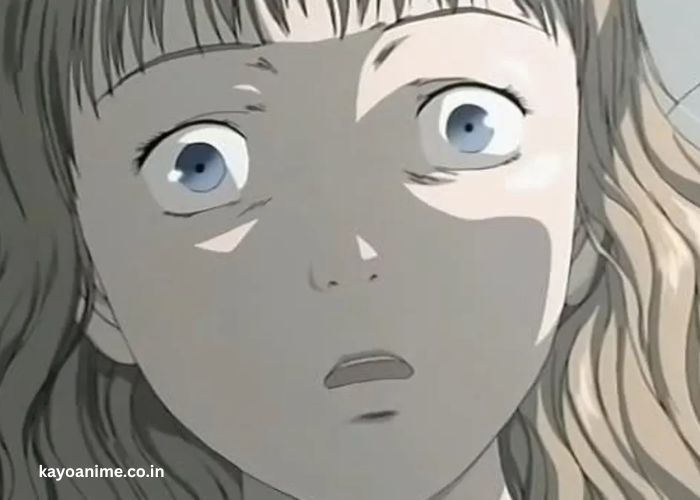Anime, as we know it today, is a global cultural phenomenon, captivating audiences with its diverse storytelling and vibrant animation. However, to truly appreciate its evolution, one must delve into the rare anime of the early 20th century. These pioneering works, often lost to time, offer invaluable insights into the origins of Japanese animation.
In this blog post, we’ll journey back to the roots of anime, exploring some of the oldest and most significant works that laid the foundation for the industry we cherish today.
Key Points:
- Historical Significance: These early works are the bedrock of Japanese animation.
- Rediscovery: Many of these films were lost but have been recovered in recent years.
- Cultural Insight: They provide a window into Japan’s early 20th-century society and artistry.
What Is Considered the First Japanese Animated Film?
The title of Japan’s first animated film is a subject of debate among historians. However, one contender is Katsudō Shashin, a brief filmstrip from the Meiji era, dating back to between 1907 and 1912. This three-second animation depicts a boy in a sailor suit writing the kanji characters “活動写真” (katsudō shashin, meaning “moving picture”), removing his hat, and bowing. The filmstrip was discovered in Kyoto in 2005 and is believed to be the earliest known example of Japanese animation.
Another early work is Imokawa Mukuzō Genkanban no Maki, produced in 1917 by Ōten Shimokawa. This five-minute silent film is considered one of the first professional Japanese animated films, showcasing the early efforts to bring animation to cinema audiences.
What Is The Dull Sword and Why Is It Important?
The Dull Sword (Namakura Gatana) is a four-minute silent animated film released in 1917. Directed by Jun’ichi Kōuchi, it tells the comedic story of a samurai who purchases a dull-edged sword and attempts to test its sharpness on unsuspecting townspeople. The film is significant as it is one of the earliest surviving examples of Japanese animation.
Rediscovered in 2007 in an antique market in Osaka, The Dull Sword offers a glimpse into the animation techniques and storytelling styles of the period. The film was digitally restored and has been screened at various film archives, allowing contemporary audiences to appreciate this historical gem.
What Is Urashima Tarō and Its Role in Anime History?
Urashima Tarō is a short animated film produced in 1918 by Seitaro Kitayama. Based on the classic Japanese folk tale, it tells the story of a fisherman who saves a turtle and is rewarded with a journey to an underwater kingdom. The film is notable for being one of the earliest examples of anime adapting traditional Japanese stories.
Although initially thought to be lost, Urashima Tarō was rediscovered in 2007 in an antique market in Osaka. However, upon closer examination, the discovered film was found to be a different, previously unknown work. Despite this, the original Urashima Tarō remains a significant piece of anime history, representing the early efforts to adapt Japanese folklore into animated form.
How Did the 1923 Great Kantō Earthquake Affect Early Anime?
The 1923 Great Kantō Earthquake had a devastating impact on Tokyo and its surrounding areas, including the animation industry. Many early anime films were stored in studios and archives that were destroyed during the earthquake, leading to the loss of numerous works from the early 20th century.
This disaster underscores the fragility of early film media and the importance of preservation efforts. Despite the challenges, some films have survived through rediscovery in antique markets and private collections, allowing modern audiences to experience these early works.
How Can You Access These Rare Anime Today?
Accessing these early anime films can be challenging due to their age and the limited number of surviving copies. However, several institutions and platforms have made efforts to preserve and share these works with the public.
The National Film Center at the National Museum of Modern Art in Tokyo has digitized and made available several early Japanese animated films, including The Dull Sword. These films can be viewed on their official website, providing a valuable resource for those interested in the history of anime.
Additionally, various film archives and cultural institutions around the world have undertaken preservation projects to safeguard these rare works. Online platforms and festivals dedicated to classic cinema occasionally feature screenings of early Japanese animation, offering opportunities to experience these historical gems.
Conclusion
The rare anime of the early 20th century are more than just historical curiosities; they are the foundation upon which the vibrant and diverse world of anime stands today. Through films like Katsudō Shashin, Imokawa Mukuzō Genkanban no Maki, The Dull Sword, and Urashima Tarō, we gain insight into the origins of Japanese animation and the cultural context in which it developed.
Preserving and studying these works is crucial, not only for understanding the evolution of animation but also for appreciating the artistic and cultural heritage they represent. As anime continues to evolve and captivate audiences worldwide, let us not forget the pioneers who laid the groundwork for this beloved medium.
FAQ’s
- What is the oldest known Japanese animated film?
The oldest known Japanese animated film is Katsudō Shashin, a three-second filmstrip from the Meiji era, dating back to between 1907 and 1912.
- Who directed The Dull Sword?
The Dull Sword (Namakura Gatana) was directed by Jun’ichi Kōuchi and released in 1917.
- Is Urashima Tarō still available to watch?
While Urashima Tarō was initially thought to be lost, it was rediscovered in 2007. However, the discovered film was found to be a different, previously unknown work.
- How did the 1923 Great Kantō Earthquake impact early anime?
The earthquake destroyed many studios and archives, leading to the loss of numerous early anime films.
- Where can I watch these early Japanese animated films?
The National Film Center at the National Museum of Modern Art in Tokyo has digitized and made available several early Japanese animated films on their official website.

